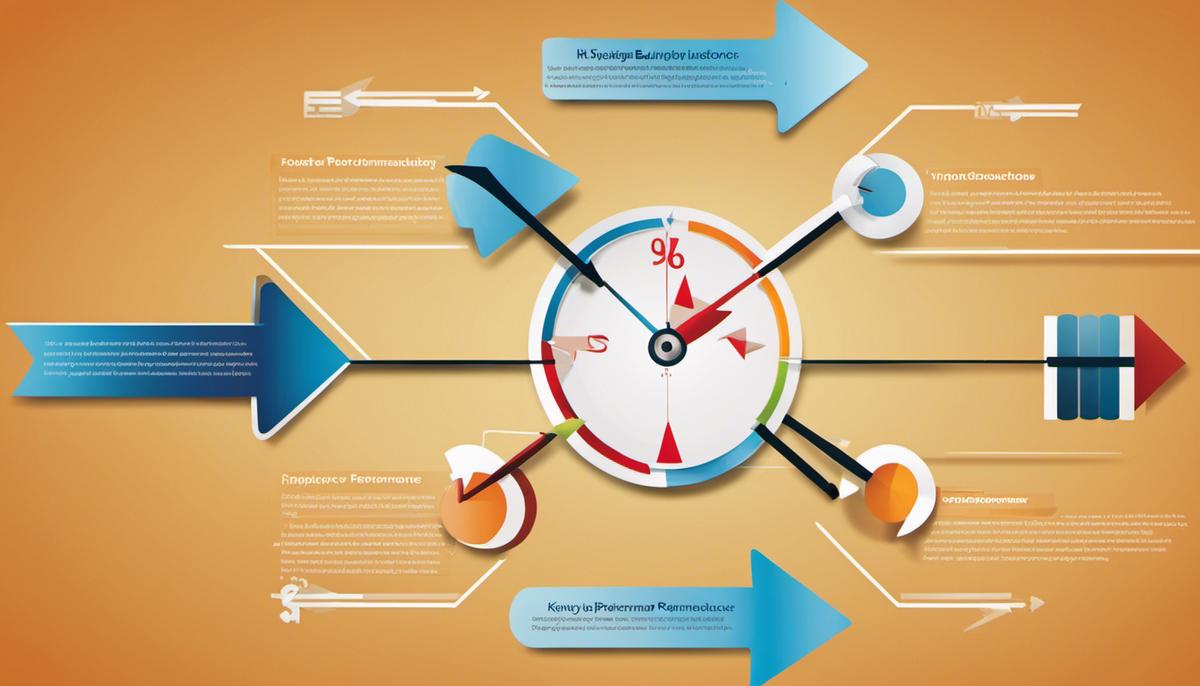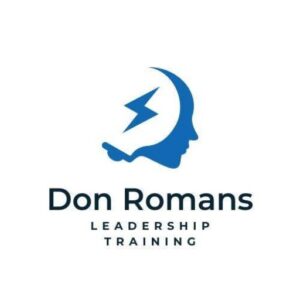In a highly competitive business environment, the catalyst for company growth and improved productivity lies in the hands of its workforce. Thus, the regular evaluation of employee performance is essential. This process enables organizations to keep their employees motivated, identify potential leaders, and facilitate a general culture of improvement. In the forthcoming sections, we’ll delve into the importance of performance evaluation methods, the role of feedback in this process, and the key performance indicators (KPIs) that serve as yardsticks for performance appraisal. Finally, an effective strategy for implementing this essential management tool will be discussed, providing a holistic view of this critical component of successful organizations.
Importance of Evaluating Employee Performance
The Significance of Evaluating Employee Performance
Continually assessing an employee’s performance within an organization plays a pivotal role in various aspects. Critical among these aspects is the enhancement of productivity. Regular employee evaluations provide an opportunity for managers to lay down clear expectations within their team members’ work parameters. Understanding and focusing on their roles leads to enhanced employee productivity, as goals become more transparent and streamlined.
Identification of Potential Leaders
Evaluations also allow identification of potential leaders within the organization. By constantly comprehending an employee’s work, supervisors can draft key insights regarding their leadership and teamwork potential, communication skills and problem-solving capabilities. This information, when assessed, helps in employee placements for managerial positions and assists in making crucial decisions about promotions or additional responsibilities.
Maintaining Employee Interest and Motivation
Moreover, regular performance evaluations contribute significantly to maintaining employees’ interest and motivation. Recognizing their hard work and offering constructive feedback keeps them motivated and invested in the company. Employees are expected to perform better when they have a clear understanding of how their work directly impacts the organization. The ongoing engagement and communication fostered by these evaluations can encourage employees to continuously improve their performance, benefiting both them and the organization.
Redirecting Employee Performance
There are times when an employee’s performance may not be up to par, or they may be unaware they are not meeting expectations. Evaluations are a chance to redirect these discrepancies, provide advice, and create an actionable plan to improve future performance. Setting realistic goals and delivering actionable feedback can refocus an employee’s work drive and potential.
Facilitating Organizational Growth
The ripple effects of performance evaluations extend beyond the individual employee and their manager to contribute to the overall growth of the organization. When companies invest time and resources in their employees through assessment, feedback, and potential training, they are investing in a workforce that is more skilled, motivated, and productive. This, in turn, leads to an increase in overall organizational efficiency and profitability.
Encouraging a Culture of Open Dialogue
Frequent evaluations aid in creating an environment that values open dialogue. This encourages employees to voice their thoughts, challenges, and ideas more freely. A positive and open company culture in turn boosts morale, productivity, and fosters a more cohesive workforce.
In the corporate world, continuous performance evaluations play a pivotal role in enhancing employee productivity, encouraging professional development, maintaining workers’ morale, fostering potential leaders, and facilitating organizational growth. These assessments create a highly engaged, skilled, and cohesive workforce, making them a crux of every successful business’ updated strategy. The job of employee evaluations, therefore, goes beyond the usual business operations and should be undertaken with priority and care.

Methods of Employee Performance Evaluation
Understanding Self-Evaluations
In the process of self-evaluations, employees have the opportunity to critique their own work, highlighting their accomplishments, learning from their mistakes, identifying their strengths, and acknowledging areas that need further improvement. This procedure is essentially an exercise of introspection and self-awareness, contributing to individual growth within the professional context. Say, a graphic designer may masterfully evaluate their creative skills, but realizes a need to enhance their time management.
Contrarily, self-evaluations pose certain challenges as well. Owing to a lack of objectivity, some employees might be overly critical of themselves, while others may view themselves through rose-colored glasses. Also, the appraisal may not encompass all facets of their job performance, especially if the employee is oblivious to or perhaps chooses to ignore certain aspects of their work.
360-Degree Feedback
The 360-degree feedback method involves gathering performance-related data from various people who interact with the employee. This could include supervisors, peers, subordinates, and even clients or customers. For instance, a project manager could be evaluated by her team members, superiors, and the clients she deals with.
The strength of this method lies in its comprehensiveness. It presents a fuller picture of an employee’s performance as it includes multiple perspectives. It’s also a means of getting feedback on interpersonal skills, which might not be evident in other evaluation methods.
However, there are drawbacks. Gathering feedback from so many sources can be complex and time-consuming. It may also cause discomfort or distress for the employee if they receive negative feedback from multiple directions. Without a system in place to ensure the feedback is constructive and honest, it may turn into a personal or popularity contest rather than a professional evaluation.
Performance Reviews
Performance reviews or appraisals are typically conducted by a manager or supervisor and involve a formal assessment of an employee’s work performance over a specific period. This can include examining goal achievement, task completion, skill demonstration, and overall contribution to the team or organization. For example, a salesperson might be appraised on the number of deals closed or the revenue generated.
The advantage of performance reviews is their ability to provide clear, structured feedback that can help guide future performance. They can also serve as a basis for decisions about promotions, bonuses, or disciplinary actions.
On the downside, the process can be stressful for employees and sometimes creates a hierarchical feeling. Moreover, if not handled properly, it might focus more on past mistakes rather than future development. Also, the influence of unconscious biases can affect the fairness and accuracy of the review.
Routine Feedback Approach
The modern school of thought on employee performance evaluation leans towards a method known as routine feedback. This approach encourages frequent dialogues and assessments, deviating from the traditional single yearly review. By providing feedback incessantly, employees are in a constant recitation of amending and enhancing their overall capabilities.
Putting this approach into practice ensures immediate rectification and learning which cultivate a progress-oriented attitude. This can significantly contribute towards cementing stronger ties between supervisors and their staff members. To illustrate, a social media manager receiving weekly feedback on their content plan can swiftly make the requisite changes rather than lingering on until the annual review.
Similarly, it’s worth mentioning that this consistent feedback method requires appreciable commitment and time from supervisors. This might seem challenging particularly in bigger establishments or where managers are responsible for numerous team members. Moreover, wrongly executed, it could lead to an overwhelming barrage of feedback, which might sow confusion or erode employee morale.

Key Performance Indicators (KPIs)
Demystifying Key Performance Indicators (KPIs)
Key Performance Indicators (KPIs) are deemed critical tools leveraged by businesses and corporations to gauge and track their employees’ productivity and performance. They are quantifiable, alignable metrics that offer retrospect on the productivity of an individual’s tasks in comparison to stipulated objectives or benchmarks. The significance of KPIs in asserting an employee’s performance is profound. KPIs are instrumental in monitoring employees’ advancement, and spotting their disciplinary strengths and improvement zones. Essentially, these metrics convert subjective observations into measurable data, rendering the process of performance evaluation unbiased and definitive.
Operating and Result KPIs
There are two primary categories of KPIs, namely Operating KPIs and Result KPIs. Operating KPIs gauge an individual’s job performance on a near-real-time basis. They are useful for tracking daily activities and making immediate corrections or improvements if necessary. Result KPIs, on the other hand, are concerned with the output and the general outcome of an individual’s work over a given time period. These metrics reflect the extent of the employee’s contributions to the organization’s overall strategic objectives.
KPIs Across Different Industries
Different industries uphold different standard KPIs unique to their line of work. For instance, in the sales industry, common KPIs might consist of the number of new contracts signed, the volume or value of sales generated, or the number of customer meetings conducted in a particular period.
In manufacturing, standard KPIs often revolve around production rates, machine uptime, or defect rates – all clear-cut, quantifiable metrics that determine efficiency and productivity within the factory setting.
Additionally, in the customer service sector, common KPIs include customer satisfaction scores, the number of successfully resolved customer queries, or the average time required to address customer’s issues.
Digital marketing is another field where KPIs play a crucial role. Here, metrics can range from website traffic and page views to user engagement, conversion rates, and customer acquisition costs.
Customizing KPIs
While industry-standard KPIs provide a good starting point, they must be tweaked to reflect the individual objectives and responsibilities of each employee. Furthermore, KPIs should not remain static but should be reassessed and updated regularly to reflect changes in organizational goals, market trends, and job roles.
Understanding the Role of KPIs
Key Performance Indicators (KPIs) serve as essential measurement tools for assessing employee performance. They simplify and quantify complex aspects of individual performances into comprehensible metrics. This, in turn, enables supervisors to make informed, evidence-based decisions when managing their team.

Roles of Feedback in Performance Evaluation
The Importance of Feedback
Performance evaluation is incomplete without proper feedback. Feedback acts as a compass, guiding employees towards improvement, acknowledging tasks accomplished and inspiring progress towards established goals. It opens fruitful communication channels between supervisors and their team, cultivating a conducive work atmosphere based on clarity of roles and expectations.
Types of Feedback
Feedback, when used correctly in the performance evaluation process, can be categorized into positive and negative feedback. Positive feedback acknowledges an employee’s successful performance or achievement. It is an affirmation of the right actions taken and helps build confidence, self-esteem, and motivation. Negative feedback, on the other hand, is often perceived negatively but can be an instrumental tool for improvement when communicated effectively. It is used to correct and guide behaviors or actions that are off track or detrimentally impacting an employee’s performance.
Giving Constructive Feedback
To transform negative feedback into a constructive tool, the focus should be on the action or behavior and not on the person. The feedback should be specific, providing clear examples of what needs to be improved. Feedback should also be timely. Discussing an event months after it has occurred can lead to confusion and may not produce the desired change. Furthermore, feedback should be solution-oriented, focusing on the strategies that can be implemented to improve the performance.
Impact of Feedback on Employee Performance and Motivation
Feedback has a profound impact on employee performance and motivation. Positive feedback boosts the morale of employees and motivates them to maintain good performance. It reinforces the right behaviors and performance, encouraging the continuity of these positive actions. It also promotes job satisfaction and increases employee retention.
Negative feedback, when given constructively, can facilitate needed adjustments and help employees grow in their roles. It aids in identifying skills gaps and areas that require further training and development. This improves an employee’s performance as they get to understand the areas where improvements are necessary. However, when negative feedback is delivered poorly, it can demoralize employees, lower their self-esteem, and negatively impact their performance.
Feedback, if communicated effectively, can significantly contribute to the process of evaluating employee performance. It fosters an atmosphere of openness and engagement within the workplace, encouraging every individual to continuously strive to exceed their performance limits. Employing a well-structured feedback system can help organizations enhance overall employee performance levels, leading to increased motivation and better job satisfaction.

Implementing a Successful Performance Evaluation Strategy
Defining Transparent Expectations
The foundation of effective employee performance evaluation relies on setting clear, understandable, and transparent expectations. This involves outlining the tasks expected of the employee, delivering specific deadlines, and establishing defined performance objectives. Managers can utilize Specific, Measurable, Achievable, Relevant, and Time-bound (SMART) goals to provide a clear evaluation standard for their personnel. Regular assessments in pursuit of these established goals, complemented by constructive feedback, serve to elevate the motivation and morale of employees.
Effective Communication
Proactive and genuine communication is a pillar for a sound performance evaluation strategy. Regular conversations about performance provide a platform for open discussion, feedback, and coaching. This strategy allows workers to understand their strengths, areas of improvement, and how their contributions add value to the organization. It’s essential to communicate expectations and performance standards at an early stage. To build an environment of trust, the spokesperson should not wait until formal evaluation periods to communicate with their employees. Actual-time feedback and genuine recognition for good work can boost an employees’ morale and productivity.
Ongoing Monitoring and Feedback
An ongoing monitoring process is also a key component of effective performance evaluation. This involves observing and providing feedback on job-related behaviors and outcomes. Managers should avoid the common mistake of focusing only on negative areas and instead provide balanced feedback. When giving feedback, it is useful to follow the ‘feedforward’ approach which involves providing solutions and advice on improving future performance rather than focusing solely on past performance shortcomings.
Consistency in Evaluation
Inconsistency in performance evaluations can lead to perceived unfairness and bias, which can adversely impact employee morale and engagement. To avoid this, the evaluation process should be consistent across all employees. This fairness and consistency can be achieved by using standardized evaluation tools and metrics that measure performance objectively. Additionally, evaluation should be done by multiple observers to eliminate or significantly reduce biases.
Employee Involvement
Inviting employees to participate in the evaluation process can significantly contribute to its success. This can be achieved by allowing employees to self-assess their performance before the formal evaluation meeting. Their perspective can provide valuable insights and create a two-way dialogue during the feedback session. Employee involvement builds a sense of ownership over their development and can lead to increased motivation and commitment.
Training for Evaluators
The people who perform the evaluations need to be properly trained to ensure that the feedback they provide is constructive, unbiased and helpful. An untrained evaluator may rely too heavily on recent events rather than evaluating performance over the entire period, which is known as the ‘recency bias.’ Training can help managers recognize these biases and make fair, balanced assessments about employee performance.
Continuous Improvement
Performance evaluation should not be viewed as a one-time event, but as a continuous improvement process. Feedback should be used to inform and adjust employee performance objectives and develop career growth plans. The efficacy of the evaluation process itself should also be reviewed regularly for possible improvements. Lessons learned from each evaluation cycle can be used to refine the mechanism, making it more effective, fair, and transparent.
Implementing a Successful Performance Evaluation Strategy
Implementing a successful performance evaluation strategy involves setting clear expectations, cultivating a culture of effective communication, ensuring consistency in the evaluation process, engaging employees in the process, equipping evaluators with the right skills, and committing to continuous improvement. This systematic approach can contribute to an innovative, competitive, and productive work environment.
Overview
The text discusses the importance of setting clear expectations, effective communication, ongoing monitoring and feedback, consistency in evaluation, employee involvement, training for evaluators, and continuous improvement in implementing a successful performance evaluation strategy. It emphasizes the need for open dialogue, balanced feedback, fairness, standardized metrics, employee participation, evaluator training, and a continuous improvement mindset. Ultimately, these approaches can create a productive work environment and foster innovation.

Through the understanding of the importance of performance evaluation, comprehension of various methods available, acknowledgement of the value of feedback, and the use of KPIs, organizations can chart a road map to heighten their productivity and foster growth. Additionally, a well-thought-out strategy, centered around open communication and clear expectations, will promote the effective application of the performance evaluation process. Ultimately, it is through this constant appraisal, and adaptation based on assessment findings, that organizations can enhance the productivity of their workforce, harness the potential of their employees effectively and assure the attainment of their overall business goals.

